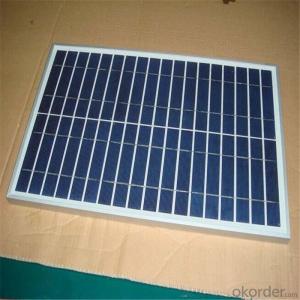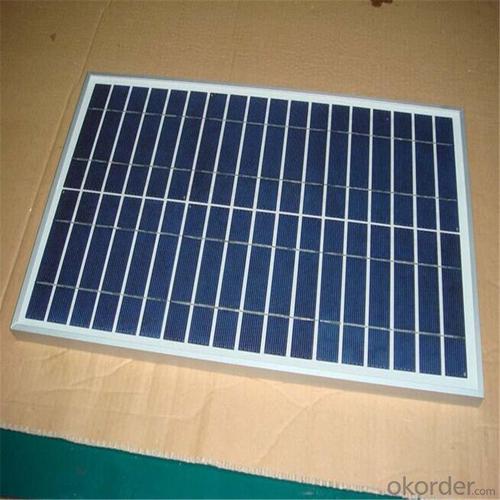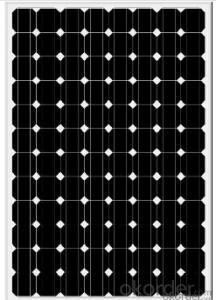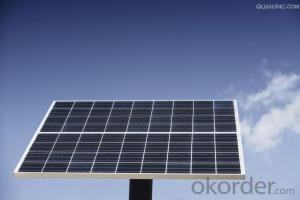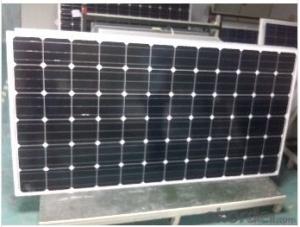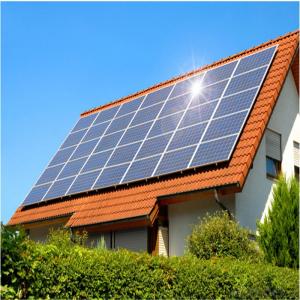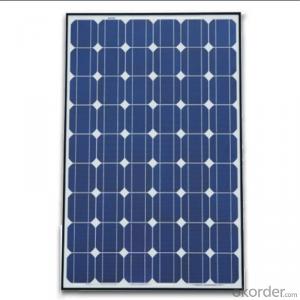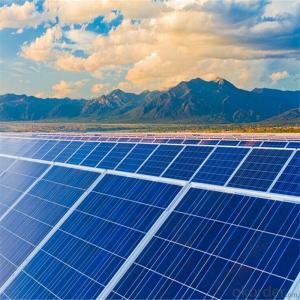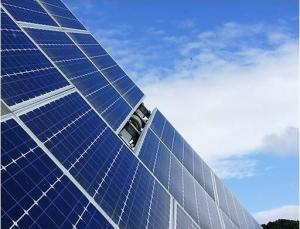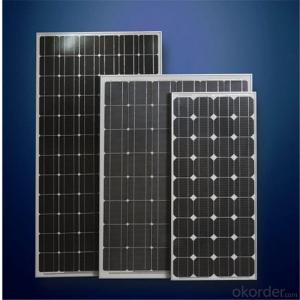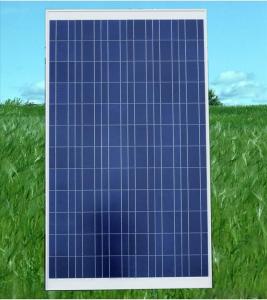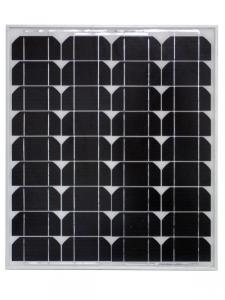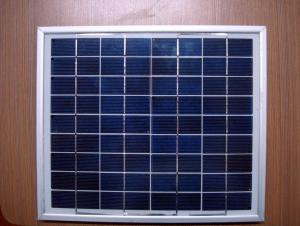230w 60 Cell Solar Photovoltaic Module Solar Panels Sunshine Coast
- Loading Port:
- China main port
- Payment Terms:
- TT OR LC
- Min Order Qty:
- 1000 watt
- Supply Capability:
- 500000 watt/month
OKorder Service Pledge
OKorder Financial Service
You Might Also Like
Specification
Instruction
1) Product name: solar panel / module
2) Solar cell: Mono-crystalline / Poly-crystalline / Amorphous
3) Tempered glass laminated with aluminum frame
4) Life time: 20 - 25 years
5) Temperature co-efficiency: A=+1,46mA B=-79mV, Rp/p=-0.43
6) Power specification at 1kW/m 2, AM 1, 5
7) Output cable: multi contact connectors
8) Construction:
a) Front: High-transmission 32mm tempered glass
b) Back: TPT
c) Encapsulant: EVA
9) Frame: aluminum
10) Certification: CE, TUV
Feature
1. Nominal 18V DC for standard output.
2. Cable connectors for easy installation.
3. Outstanding low-light performance.
4. Splendid aesthetic appearance and easy installation.
5. High efficiency & high stability.
6.Advanced EVA encapsulation system with TPT back sheet to improve product modules
7. Design to meet unique demand of customer.
8.25 year module output warranty.
9. Rugged design to withstands high wind pressure and snow load, easy installation.
10. Designed to comply with rigorous operating conditions, including test.
Images
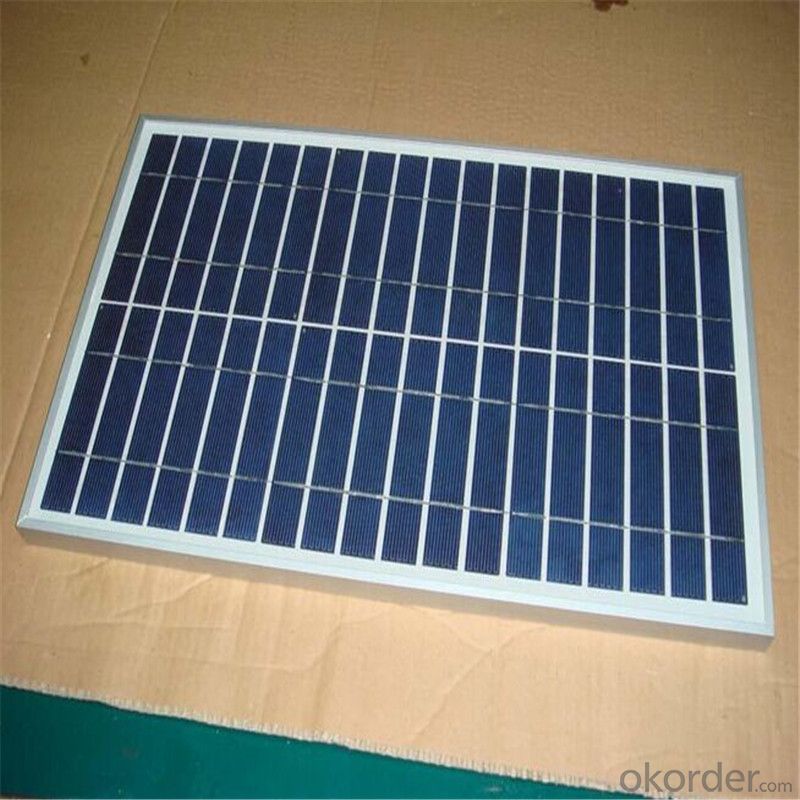
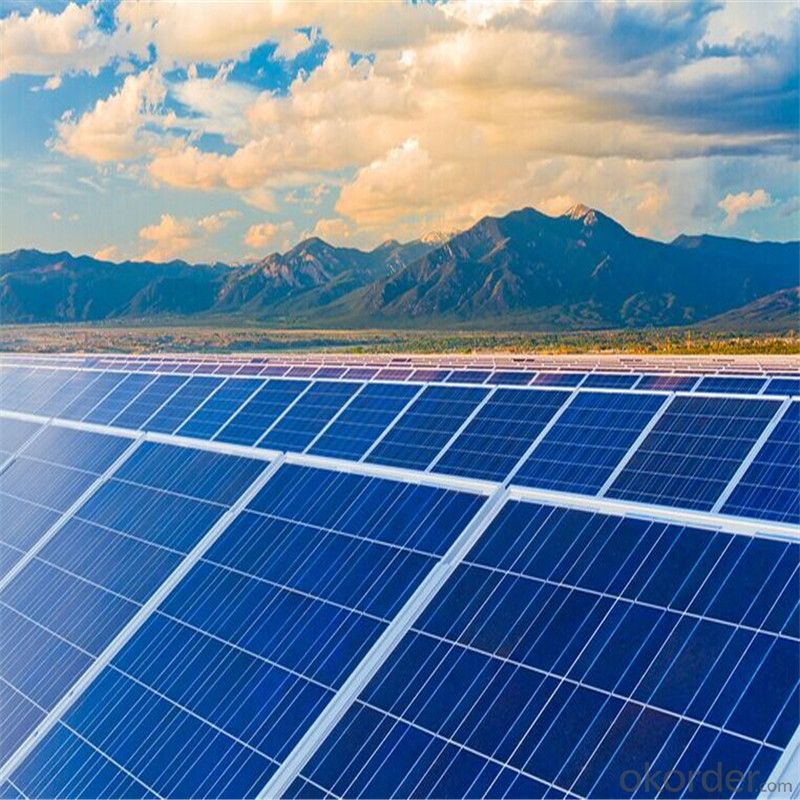
Specification
Dimension (mm) | 1640*992*40 |
NO of Cells and Connections | 60(6x10) |
Weight(kg) | 18.5 |
Tolerance | 0~+5% |
Cell | Polycrystalline Cell 156 x 156 mm |
Operating Temperature | –40 °C to +85°C |
Max System Voltage(VDC) | 1000 |
Packing | 312PCS/20ft(H) Container |
FAQ
We have organized several common questions for our clients,may help you sincerely:
1). What’s price per watt?
A: It’s depends on the quantity, delivery date and payment terms of the order. We can talk further about the detail price issue. Our products is high quality with lower price level.
2). Can you tell me the parameter of your solar panels?
We have different series of cells with different power output, both from c-si to a-si. Please take our specification sheet for your reference.
3). How do you pack your products?
We have rich experience on how to pack the panels to make sure the safety on shipment when it arrives at the destination.
4). How long can we receive the product after purchase?
In the purchase of product within three working days, We will arrange the factory delivery as soon as possible. The perfect time of receiving is related to the state and position of customers. Commonly 7 to 10 working days can be served.
- Q: Hello, I have been trying to go green, I Have purchase somesolar panel they are about 45watts I been putting it against my window and getting ok power out of it enough for my lights and a couple of low watts gadget (cellphone, 2v light, portable dvd) for couple of hours.But its seem to drain the 2v faster then I can charge Am I getting the most power out of my panel?Or should I place it on the roof? I'm in Texas and it gets hot and sunny the sun beam my room windows pretty good during 4pm-6pm.
- outside is going to be much better. You can't tell but glass is actully opaque to many ranges of 'light'. If you look at advertising for windows you may see claims to reduce sun fading of your carpet/ furniture. That is because the glass blocks UV. Solar panels get some of their energy from UV light. Also some windows are engineered to block IR to help insulate better when the house is cooler than the outside. Again, solar panels get some of their energy from light in the infrared range. And finally if you're charging batteries the 'off angle time' is still important. The amount of light absorbed is pretty closely related to the cosine of the angle that the sun is 'off' of the direct. so when the sun is 45 degrees off of perpendicular the panels still get cos45 =.707 or about 70% of the available energy. (In practice it's a little less than that because not as much energy gets to the panel to be absorbed as at midday). But anyway, you can figure two hours of morning or late afternoon sun will give you as much energy as hour of midday sun. So if the panel is inside, you miss out on that available energy.
- Q: I have a rental property and use a 230-Volt 6-Amp Pool Pump.I would like to use a solar panel to run it when the house is empty, using mains power when guests are here.The building is in the Caribbean so plenty of sun!!I wanted to run it quot;directand not use batteries. Is this possible??What size panel would I need? A DC invertor too??Thanks!!
- Why don't you use the mains as the battery with net metering. That way you don't have to have two pumps, a DC pump for the solar and an AC pump for the mains. A 230 V, 6 A pump draws 3.68 kw. A typical solar panel produces about 400 watts so you would need about 0 solar panels which should run you about $20,000 US. Of course, you may not need to run the pump continuously but in order to use fewer solar panels for sporadic use, you would need the batteries or the net metering. Keep in mind that with the costs of the panels, you will be paying about 38 cents a kwh. Grid power usually costs around 5 cents a kwh.
- Q: What in the solar panel wares out so that the panel can not convert the suns energy to electric energy? Please post were you get answers.
- Panel degradation can occur in many ways, but they generally take a long time (40yr old panels are still working...). One problem is diffusion. Since the cells are at a finite temperature and receive energy from the light, atoms in the structure can migrate around the cell. If you mix up materials from either side of the junction, you can reduce or remove the internal field and so charge separation no longer occurs, meaning no more current output. This is generally a very, very slow process. My current research is on the back contacts of cadmium-telluride solar cells. CdTe forms a junction with metals, and this junction has a built in electric field that tries to stop the current going out of the cell. This is bad! It reduces the power you get out. To overcome this, copper is sometimes added. This really cuts down on the restrictions on current, but copper is very diffusive. Within weeks at room temperature it can jiggle its way along grain boundaries (the solar cells aren't one big crystal, but a load of small grains. Our lab makes ones about 0.006mm across). Whilst copper at the back contact is good because it cancels out the effect of the field there, once it gets to the cell junction it has a worse effect. It can act as a 'recombination centre' or 'shunting pathway' - it either absorbs the free charges or takes them somewhere useless and cuts the power output. Copper is a very obvious and quick acting cause of solar panels reducing in output. I believe a similar effect is true for other cells, just with different materials. The quality of the junction degrades slowly as heat and light give energy to atoms in the lattice and make them jiggle around a bit. Once you have things out of place, performance degrades.
- Q: Do solar panels require a battery backup system?
- No, solar panels do not require a battery backup system. Solar panels can directly convert sunlight into electricity and supply it to the electrical grid or a connected system in real-time. However, for individuals who want to store excess energy produced by the solar panels for use during times when sunlight is not available, a battery backup system can be installed.
- Q: Can solar panels be installed on a pergola or gazebo structure?
- Yes, solar panels can be installed on a pergola or gazebo structure. These structures provide a suitable platform for solar panel installation and can help maximize sunlight exposure for energy generation. Additionally, installing solar panels on a pergola or gazebo can serve a dual purpose by providing shade and generating clean, renewable energy.
- Q: Can solar panels power an entire house?
- Yes, solar panels can power an entire house. The number of panels required depends on the energy needs of the house, the location, and the efficiency of the panels. However, with the right setup and sufficient sunlight, solar panels can generate enough electricity to meet the power demands of a household.
- Q: can solar panels be on houses? malls?stores? WHAT ABOUT TRAINS?
- Solar Panels can be used anyway were the panels can get sunlight. Increase efficiency facing north in Australia. You can place them on a roof of a building, caravan, boat, train, bus etc plus you can put them on stands on the ground. Great for camping. You can connect them to the electricity grid or use standalone systems to generate all the power you need. Germany is the leader in solar power usage and Australia gets more sun then they do It makes sense that all Australian households should use solar.
- Q: I know the basics of how solar panels work. Solar panels convert sunlight into DC electricity which is stored in batteries which would need to be run through an inverter to convert it to household AC. But is there a way for the appliances to use the solar panels electricity FIRST and any additional power from the grid? Is that how it works or do they only run specific devices(water heater, pool pump, etc)?
- The utility is your battery. Doesn't make any difference which is used first. At least that's the case in Calif. However, you need an electrician to do the attachment, and probably an inspection by the utility.
- Q: Can solar panels be installed on a multi-story building?
- Yes, solar panels can be installed on a multi-story building.
- Q: What is the most efficient solar panel, how many would we need to power the United States, and how much land would it take?
- Annual power consumption in the US is approximately .2*0^5 Watt-hours. The average solar panel can generate 80W continuously. We can break up the calculation into parts: .2*0^5 Watt-hours per year 925 hours per year .3*0^ continuous watts 80W per panel 64383566 panels 000 sq. inches average solar panel area 650 million square miles (!!!) To give you a better idea, the total surfacre area of the United States of America is 3 million square miles. The surface of the earth is 96 million square miles. Not even 3 planets full of solar panels would be enough. Maybe it is easier for people to start using electricity more responsibly?
Send your message to us
230w 60 Cell Solar Photovoltaic Module Solar Panels Sunshine Coast
- Loading Port:
- China main port
- Payment Terms:
- TT OR LC
- Min Order Qty:
- 1000 watt
- Supply Capability:
- 500000 watt/month
OKorder Service Pledge
OKorder Financial Service
Similar products
Hot products
Hot Searches
Related keywords
